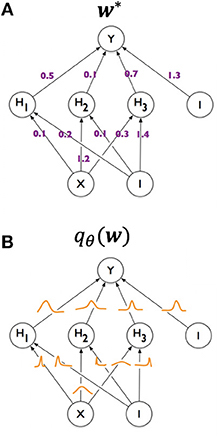Article Title: Inclusive search for highly boosted Higgs bosons decaying to bottom quark-antiquark pairs in proton-proton collisions at √s= 13 TeV
Authors: The CMS Collaboration
Reference arxiv:2006.13251
Since the discovery of the Higgs boson one of the main tasks of the LHC experiments has been to study all of its properties and see if they match the Standard Model predictions. Most of this effort has gone into characterizing the different ways the Higgs can be produced (‘production modes’) and how often it decays into its different channels (‘branching ratios’). However if you are a fan of Sonic the Hedgehog, you might have also wondered ‘How often does the Higgs go really fast?’. While that might sound like a very silly question, it is actually a very interesting one to study, and what has been done in this recent CMS analysis.
But what does it mean for the Higgs to ‘go fast’? You might have thought that the Higgs moves quite slowly because it is the 2nd heaviest fundamental particle we know of, with a mass around 125 times that of a proton. But sometimes very energetic LHC collisions can have enough energy to not only to make a Higgs boson but give it a ‘kick’ as well. If the Higgs is produced with enough momentum that it moves away from the beamline at a speed relatively close to the speed of light we call it ‘boosted’.
Not only are these boosted Higgs just a very cool thing to study, they can also be crucial to seeing the effects of new particles interacting with the Higgs. If there was a new heavy particle interacting with the Higgs during its production you would expect to see the largest effect on the rates of Higgs production at high momentum. So if you don’t look specifically at the rates of these boosted Higgs production you might miss this clue of new physics.
Another benefit is that when the Higgs is produced with a boost it significantly changes its experimental signature, often making it easier to spot. The Higgs’s favorite decay channel, its decay into a pair of bottom quarks, is notoriously difficult to study. A bottom quark, like any quark produced in an LHC collision, does not reach the detector directly, but creates a huge shower of particles known as a jet. Because bottom quarks live long enough to travel a little bit away from the beam interaction point before decaying, their jets start a little bit displaced compared to other jets. This allows experimenters to ‘tag’ jets likely to have come from bottom quarks. In short, the experimental signature of this Higgs decay is two jets that look bottom-like. This signal is very hard to find amidst a background of jets produced via the strong force which occur at rates orders of magnitude more often than Higgs production.
But when a particle with high momentum decays, its decay products will be closer together in the reference frame of the detector. When the Higgs is produced with a boost, the two bottom quarks form a single large jet rather than two separated jets. This single jet should have the signature of two b quarks inside of it rather than just one. What’s more, the distribution of particles within the jet should form 2 distinct ‘prongs’, one coming from each of the bottom quarks, rather than a single core that would be characteristic of a jet produced by a single quark or gluon. These distinct characteristics help analyzers pick out events more likely to be boosted Higgs from regular QCD events.
The end goal is to select events with these characteristics and then look for a excess of events that have an invariant mass of 125 GeV, which would be the tell-tale sign of the Higgs. When this search was performed they did see such a bump, an excess over the estimated background with a significance of 2.5 standard deviations. This is actually a stronger signal than they were expecting to see in the Standard Model. They measure the strength of the signal they see to be 3.7 ± 1.6 times the strength predicted by the Standard Model.

The analyzers then study this excess more closely by checking the signal strength in different regions of Higgs momentum. What they see is that the excess is coming from the events with the highest momentum Higgs’s. The significance of the excess of high momentum Higgs’s above the Standard Model prediction is about 2 standard deviations.

So what we should we make of these extra speedy Higgs’s? Well first of all, the deviation from the Standard Model it is not very statistically significant yet, so it may disappear with further study. ATLAS is likely working on a similar measurement with their current dataset so we will wait to see if they confirm this excess. Another possibility is that the current predictions for the Standard Model, which are based on difficult perturbative QCD calculations, may be slightly off. Theorists will probably continue make improvements to these predictions in the coming years. But if we continue to see the same effect in future measurements, and the Standard Model prediction doesn’t budge, these speedy Higgs’s may turn out to be our first hint of the physics beyond the Standard Model!
Further Reading:
“First Evidence the Higgs Talks to Other Generations“: previous ParticleBites post on recent Higgs boson news
“A decade of advances in jet substructure“: Cern Courier article on techniques to identify boosted particles (like the Higgs) decaying into jets
“Jets: From Energy Deposits to Physics Objects“: previous ParticleBites post on how jets are measured






